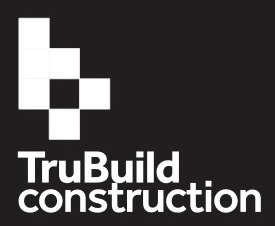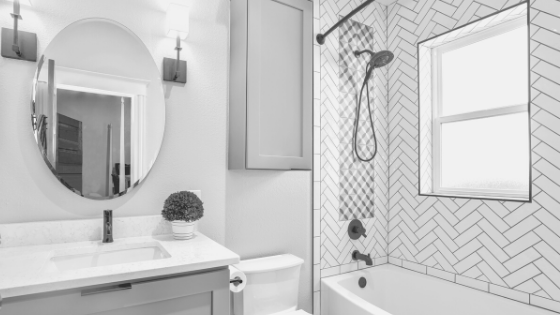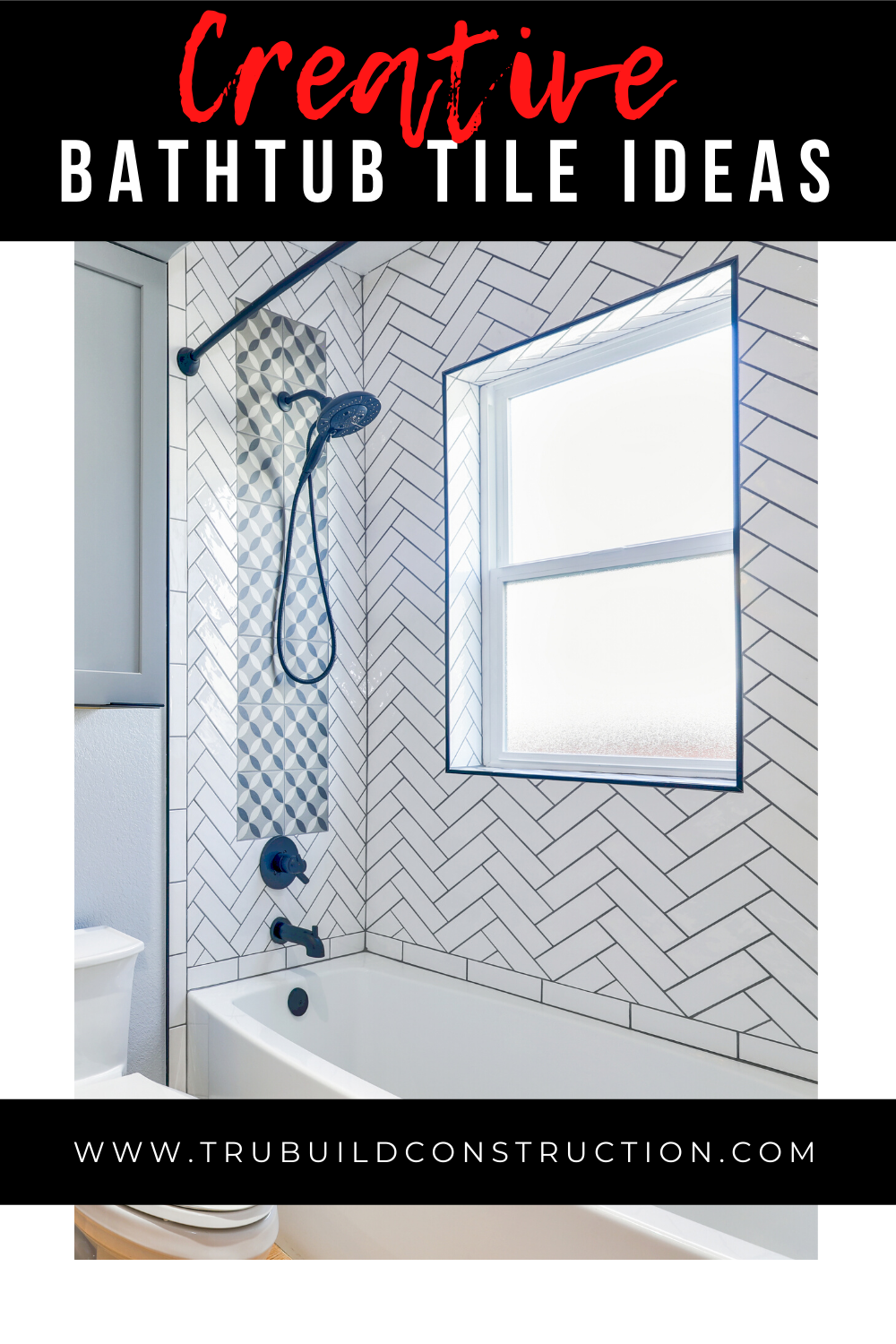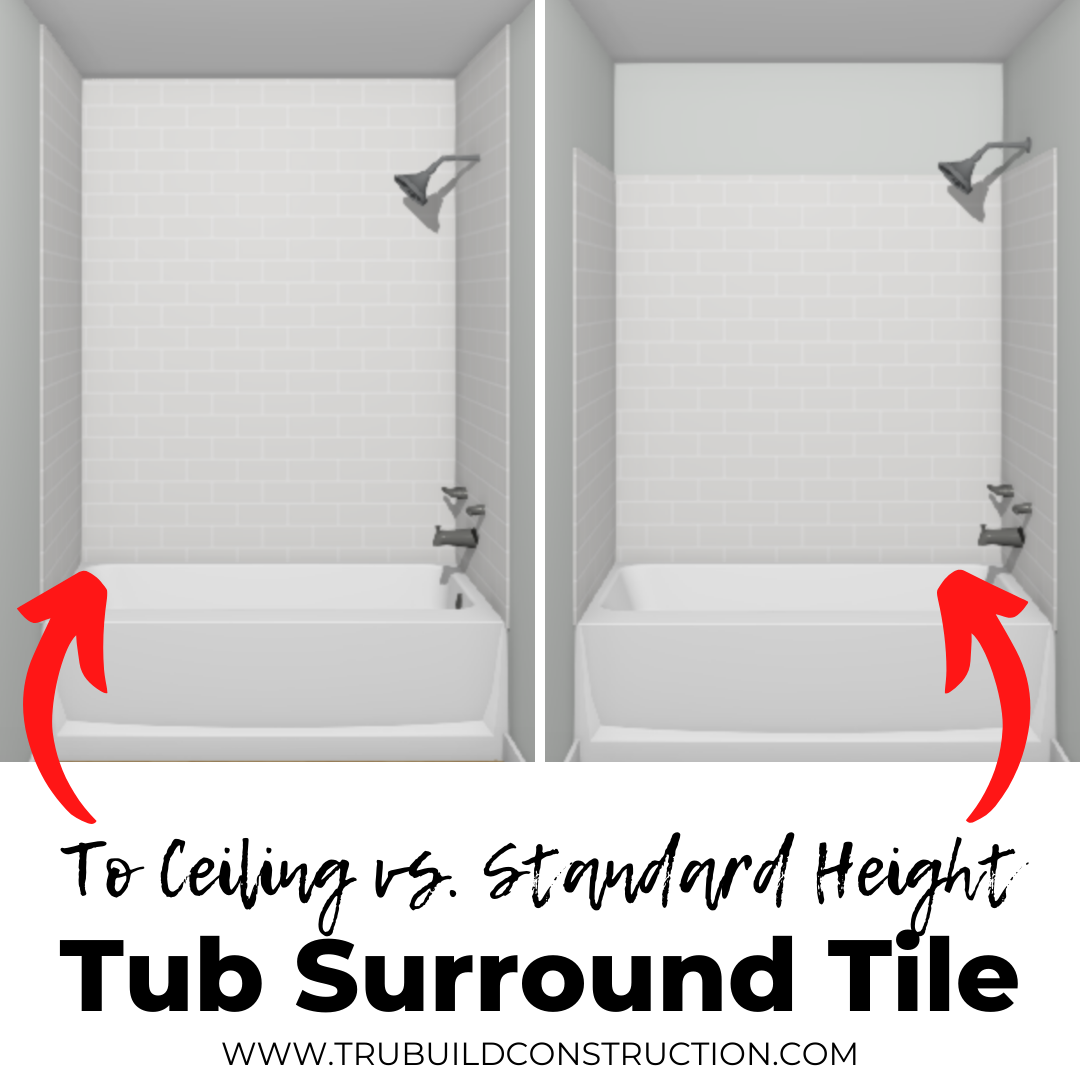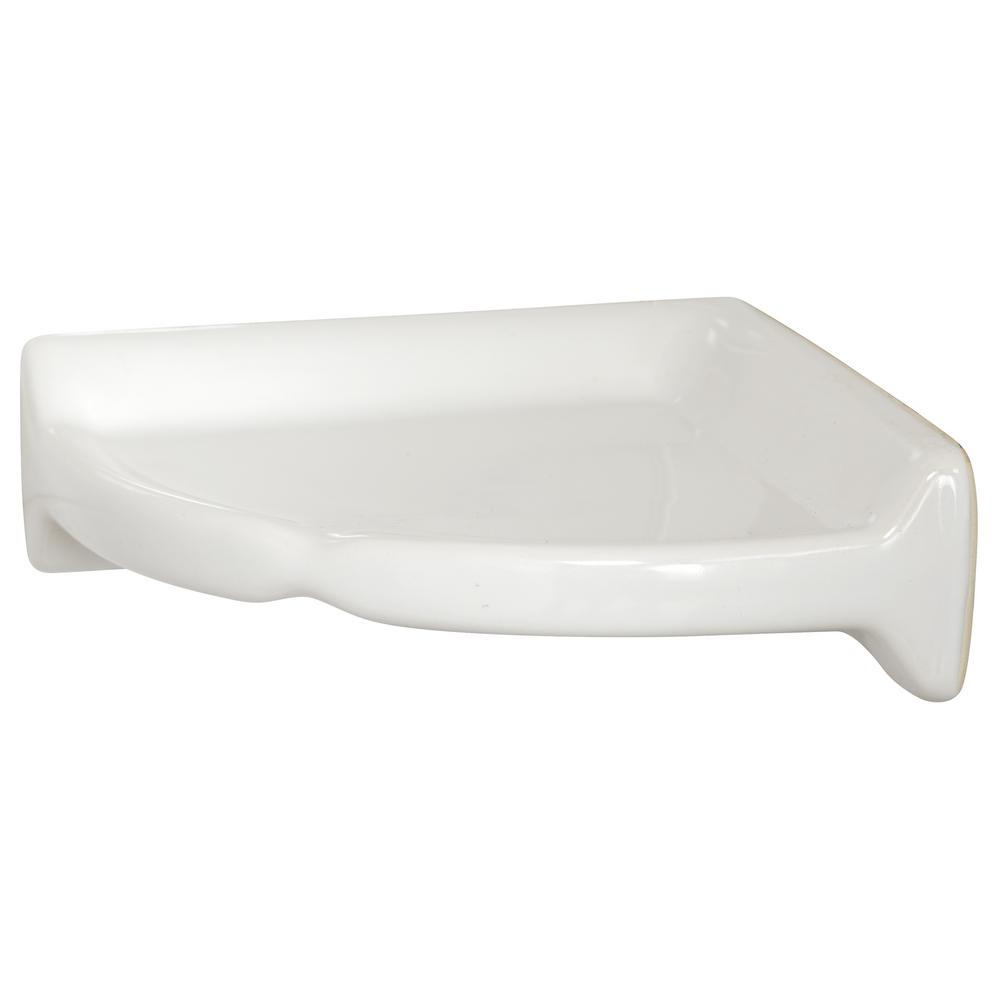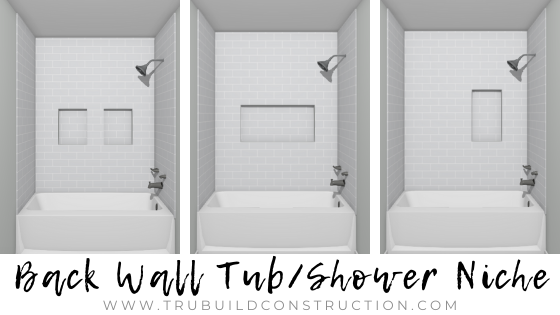Creative Bathtub Tile Ideas And Inspiration
If you’re looking for creative design inspiration to give you bathtub tile ideas, you have come to the right place!
Planning a bathroom remodel has so many moving parts, and choosing tile can be one of the most fun to do! Tiling a bathtub surround can really set the tone for the look of a bathroom.
Tile around the tub has the ability to create a bold statement, a clean contemporary feel, or really anything that you can dream up for your bathroom design!
With so many possibilities for tile designs, it might be hard to know where to start if you’re planning on your own.
That’s why we created put this together - to give you bathtub surround tile ideas and inspiration as you work to design a functional and beautiful space!
Affiliate Disclosure: As an Amazon Associate I earn from qualifying purchases. You should assume the owner of this website has an affiliate relationship and/or another material connection, to any suppliers of goods and services that may be discussed here and may be compensated for showing advertisements or recommending products or services, or linking to the supplier's website.
4 Things To Consider When Designing A Bathtub Surround Tile Layout:
When you begin coming up with you bathtub surround tile design, you will want to consider a few factors that will tie into the over all look of the space.
Each of these factors impacts the look and function of your bathtub in one way or another, so it is worth weighing your options carefully.
Below I provided images showing examples of each option that should be decided as you create a tile design for your surround. I hope this will help you be able to better visualize how your own space could look!
1. Height Of The Tub Surround Tile -
You will want to consider what height the tile surround will go in the shower.
Typically we see people choose one of two options: “standard height”, or to the ceiling.
“Standard height” would mean tiling up to 6 feet, as measured from the floor. This is usually below the height where the shower head is located.
When working with clients, our preference is to tile all the way up to the ceiling. This is because it protects the wall and makes it easier to clean. It also can make a room look larger by having the tile go all the way up with no break.
It is worth mentioning, some people also choose to tile their ceiling, although this isn’t something we see as standard in most bathrooms. The exception would be if the ceiling is low or at an angle that will likely get wet.
2. Where The Tile Surround Will Stop -
Your next decision would be where to stop the tile surround on the edge.
Generally, we see people choose one of two options.
Stop the tile at the edge of the shower.
Go past the edge of the tub a few inches and then tile all the way to the floor.
This is up to your preference for look and function. Tile that comes past the edge of the tub a few inches can be preferred if you’re worried about water splashing out and getting onto the surrounding walls, although it only protects a small area.
3. The Grout Color -
Next it is important to consider if you want to have grout that will blend in with the color of the tile, or if you want the grout to be a contrasting color.
When considering which is right for you, it helps to think about what you want to focus on when looking at the tub surround.
Often contrasting grout colors will draw attention to the shape of each individual tile, and offer a bit more rustic or industrial flare to the space.
A grout color that blends with the tile offers a cleaner, more classic look and the attention is more focused on the tile as a whole and not on the grout lines.
4. Options For Storage To Add To Bathtub Tile Surround:
When you’re planning your tub surround you don’t want to forget the storage! With all the shampoo, soap, razors, and other essentials that get stored around a bathtub, you’ll want to make selecting this option a priority.
Here are the two main built-in storage options available for your bathtub surround:
Corner Tile Shelves -
Corner tile shelves are often made from stone, ceramic, or metal. They are installed by being tiled into the corners of the surround at varying heights.
There can be one or more depending on the amount of storage you need. This style offers some flexibility on the height of the bottles that might be stored on them since you have full control over the spacing.
This often is the most simple and cost-effective option for adding storage to a tiled bathtub surround.
Shampoo & Soap Niches -
Shampoo and soap niches must be built into the tub surround while it is being prepped for tile. They can be made from stone that is already finished and ready to install, or they can be made to have tile installed over them when the surround walls are tiled.
Ready-made niches can be purchased in a variety of sizes, and generally are made to fit between studs in a wall. If you have your heart set on something more unique, custom size and shape niches can also be built in place but will require more skill and cost.
Niches are a great, high-end look when it comes to storage, but they also can come with more complications. The location where it will be installed will need to be free from any plumbing, HVAC, or electrical wires in order to have room for the niche to be placed into the wall. The spacing of the studs that it will be mounted between can also sometimes make it more tricky to get it centered in a particular location unless you are willing to reframe portions of the wall.
These are important things to keep in mind, especially if you will not know what is in your walls surrounding the bathtub until they are already opened up.
Shower Niche Placement And Tile Design
If you decide to go with a shower niche, you will then need to choose the location whether it be the back wall, or one of the side walls.
First you’ll want to consider if the larger back wall is on an exterior wall of your home. If it is, then you most likely won’t be able to have your niche there, as there needs to be room for insulation in your exterior walls.
If it is not on an outside wall, then it can be a great option as there are lots of different possibilities for where and how many niches you can fit along that larger space.
A side wall can also be a great choice if you prefer not to have your stored items visible when inside the niche.
Almost always, the side wall where the shower head is located will not work, as it has plumbing running in it which means there would not be room for the niche to fit.
The wall opposite the shower head is a popular option for many clients we work with, and it allows for one or more niches depending on the size and style you choose.
Once you have figured out your niche location, you’ll want to decide how decorative you want your niche to be.
Niches can be tiled to match the rest of the tile in the shower, or can be contrasting with a different pattern or tile used inside.
Many of our clients use a niche as an opportunity to select an accent tile. Doing this can be a way to use a fun pattern tile that they love but wouldn’t want to use in a larger area because it might be overwhelming for their taste. Another reason would be that it is a more expensive tile than the budget would allow for allover use, but would be within range when only a foot or two is needed for inside the niche.
On the other hand, some people we have worked with prefer the niche to blend with the rest of the tile. This may be to have a more simple, clean look overall, or because they argue that the niche does not need to be decorative since there will be shampoo bottles and other items inside that would block the tile from view.
There are no right or wrong decisions when it comes to this, it really is all about preference and finding a design you love!
Some Of Our Favorite Bathtub Tile Surround Ideas Right Now:
Blue & White Bathtub Tile Surround
We love a beautiful pattern and this combination of crisp White Subway Tile is the perfect complement to the Blue And White Pattern Concrete Tile.
The blue tile is fun and the pop of color is just what any bathroom needs to add personality and a fresh take on a classic style.
Black & White Bathtub Tile Surround
Black and white is a classic combination!
We adore a bold Black Subway Tile and a modern zigzag Black And White Pattern Tile together.
Whether the subway tile runs horizontally or vertically, this pair adds drama to this bathtub.
Chevron Bathtub Tile Surround
For a contemporary take on a classic style, we love this Wood-Look Chevron Tile with blue and gray tones that is combined with a trendy Oversize Gray Subway Tile.
The tile is updated while still having texture and not being too sterile. This is definitely a look that turns heads!
Gray And White Bathtub Tile Surround
For a new take on a soft, classic design we paired this White Subway Tile with a beautiful Gray And White Patterned Tile.
Even when used in a larger space, the pattern isn’t too overwhelming because of the more muted colors.
This can work really well in any style or age of home and make it feel fresh!
Green And Marble Bathtub Tile Surround
It is possible to use both geometric angles and natural stone together as is beautifully shown with this lovely rich Green Picket Tile and the soft look of veining in this Large Format Marble Tile.
The contrast between the two creates a modern look with a touch of classic elegance that feels powerful and luxurious at the same time.
This could even work well with a faux marble porcelain tile for those wanting a low maintenance option.
Conclusion
Taking the time to consider all the details of how you want your tiled bathtub surround to look and function will pay off in a big way once you have the finished product! We hope that seeing some of these styles and designs helps you find inspiration. It is really fun to be able to design a custom tile surround look that shows your personality and makes you happy every time you use the space!
Now we want to hear from you - Are you planning a bathroom remodel or to tile your tub surround? What kind of tile and colors are you most drawn to for your own space? Let us know in the comments below!
